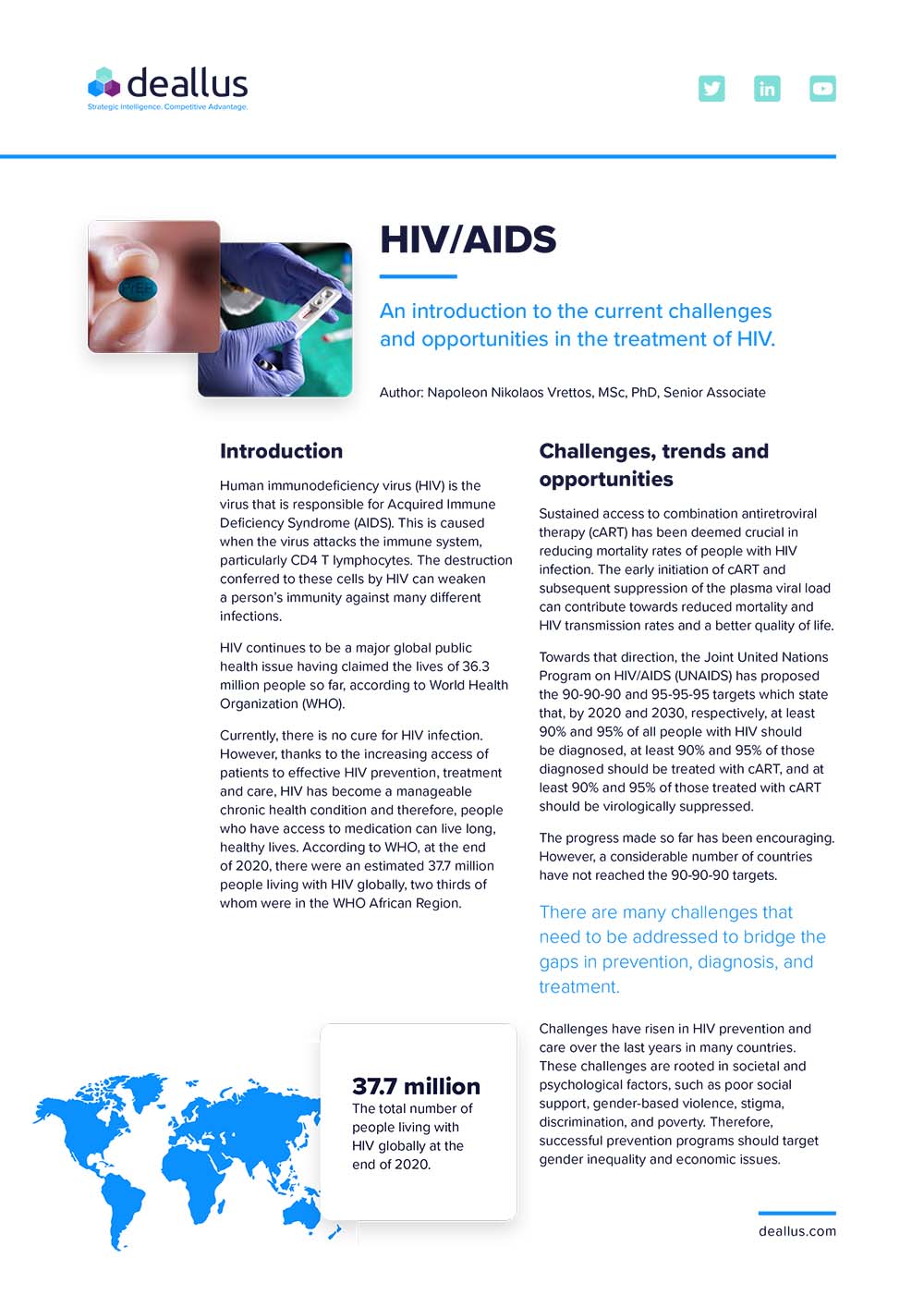HIV/AIDS: An introduction to the current challenges and opportunities in the treatment of HIV.
Human immunodeficiency virus (HIV) is the virus that is responsible for Acquired Immune Deficiency Syndrome (AIDS). This is caused when the virus attacks the immune system, particularly CD4 T lymphocytes. The destruction conferred to these cells by HIV can weaken a person’s immunity against many different infections.
HIV continues to be a major global public health issue having claimed the lives of 36.3 million people so far, according to World Health Organization (WHO).
Currently, there is no cure for HIV infection. However, thanks to the increasing access of patients to effective HIV prevention, treatment and care, HIV has become a manageable chronic health condition and therefore, people who have access to medication can live long, healthy lives. According to WHO, at the end of 2020, there were an estimated 37.7 million people living with HIV globally, two thirds of whom were in the WHO African Region.
Challenges, trends and opportunities
Sustained access to combination antiretroviral therapy (cART) has been deemed crucial in reducing mortality rates of people with HIV infection. The early initiation of cART and subsequent suppression of the plasma viral load can contribute towards reduced mortality and HIV transmission rates and a better quality of life.
Towards that direction, the Joint United Nations Program on HIV/AIDS (UNAIDS) has proposed the 90-90-90 and 95-95-95 targets which state that, by 2020 and 2030, respectively, at least 90% and 95% of all people with HIV should be diagnosed, at least 90% and 95% of those diagnosed should be treated with cART, and at least 90% and 95% of those treated with cART should be virologically suppressed. The progress made so far has been encouraging. However, a considerable number of countries have not reached the 90-90-90 targets.
Download to read more.
You may also be interested in…
The future for telehealth and neuroscience in the US
Catalyzed by Covid-19, the accelerated uptake of virtual services within neuroscience has set in motion a reimagining of future healthcare pathways. The new post-pandemic reality is a hybrid virtual/in-person approach for many neurological and psychiatric conditions - driving rapid regulatory change, reduced delivery costs, and improved patient access.
Disruption has hit pharma
Strategic intelligence for a fiercely competitive marketplace. In the pharmaceutical industry, change has long been known as the only constant. But the last few years have seen the industry challenged and reshaped by drastic internal disruption and external paradigm shifts. Deallus look at key changes in the pharma landscape through the lens of strategic intelligence, and considers how this powerful tool can help pharma stakeholders grasp the full picture of the competitive environment they intend to enter.
Digitizing Healthcare
Healthcare has always had a reputation of being resistant to change, but consumer demand and a rapidly evolving technology-driven world have led the digitization of healthcare to move at a frantic pace. In this white paper we explore the digitization trend currently infiltrating healthcare and delve into the implications of digital health on patients, payers, and pharma itself. We take stock of the current landscape, discuss likely future trends, and explore how strategic intelligence can help answer key questions for the healthcare industry in the face of so much digital innovation.
Strategic Workshops Supporting Pharma’s Future
Pharma Strategic Workshops and Wargames are an essential strategic tool for those aiming to win in their market. Pulling on our 14+ years of expertise running and facilitating strategic workshops in the pharma industry we share our learnings in this White Paper.





